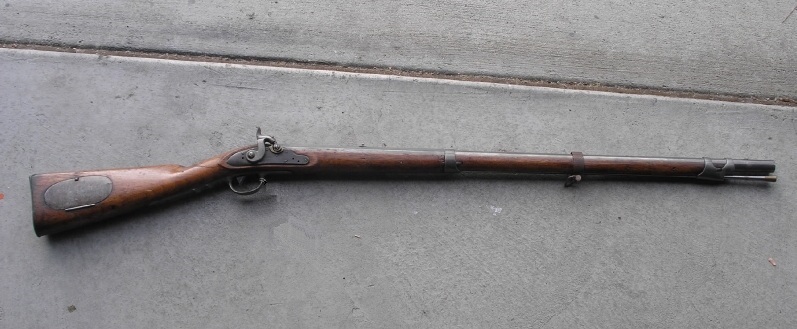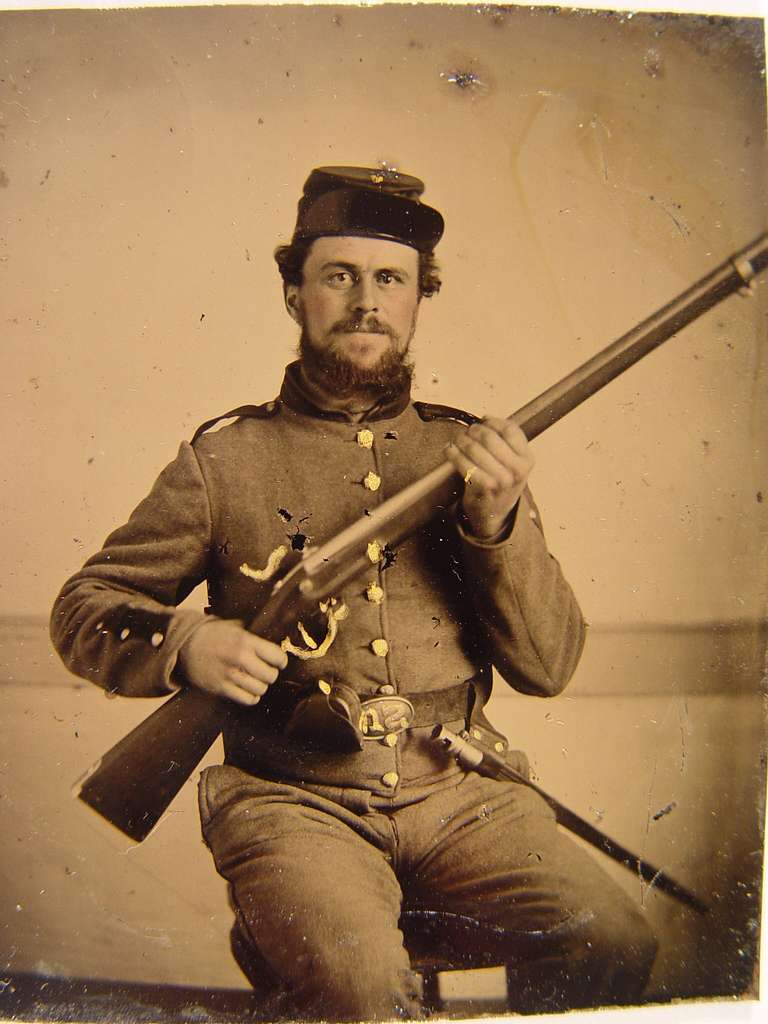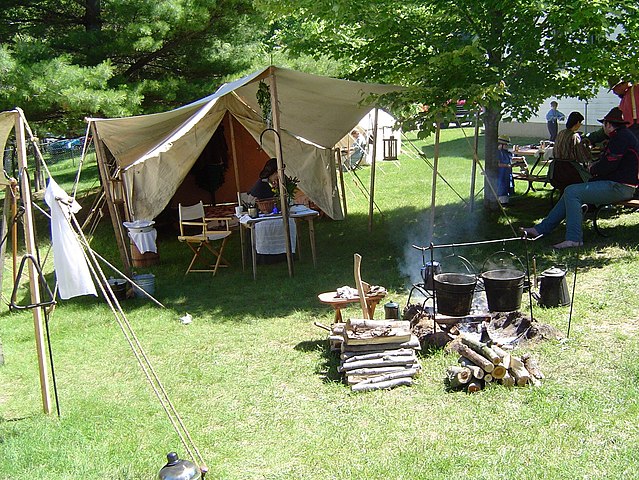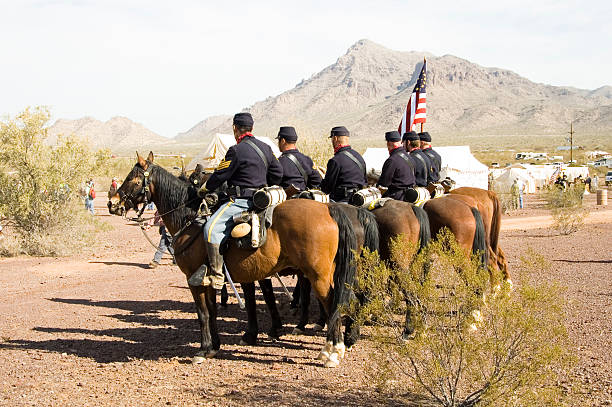From Bayonets to Canteens: Exploring Civil War Reenactment Equipment
The Civil War was a pivotal period in American history, and today, many history enthusiasts engage in Civil War reenactments to gain a deeper understanding of the era. These reenactments require accurate and authentic equipment to recreate the atmosphere and spirit of the time. In this article, we will delve into the various types of equipment used in Civil War reenactments, from bayonets to canteens. Join us on this journey as we explore the fascinating world of historical reenactment gear.
1. Introduction: Understanding Civil War Reenactments
Civil War reenactments are events where participants recreate historical battles and life during the Civil War era. These reenactments provide an opportunity for history enthusiasts to immerse themselves in the past and gain a firsthand experience of the challenges faced by soldiers and civilians during that time. To make these reenactments as authentic as possible, participants meticulously research and acquire period-accurate equipment, including weapons, clothing, and other gear.
2. Weapons of the Civil War
2.1 Rifles and Muskets
During the Civil War, rifles and muskets played a crucial role on the battlefield. Union and Confederate soldiers were armed with various types of long guns, such as the Springfield Model 1861 and the Enfield Pattern 1853. These rifles had distinctive features and were capable of accurate long-range fire, shaping the strategies employed by both sides.

2.2 Pistols and Revolvers
In addition to rifles, pistols and revolvers were commonly used by officers and cavalry units. The Colt Model 1860 Army Revolver and the Remington Model 1858 were popular choices among soldiers. These weapons provided close-quarter protection and became synonymous with the iconic image of a Civil War officer.
2.3 Bayonets and Swords
Bayonets and swords were essential melee weapons during the Civil War. Bayonets were affixed to the muzzle of rifles, transforming them into deadly spears. Swords, particularly cavalry sabers, were used by officers and mounted soldiers. These edged weapons added an element of close combat to the battlefield.
3. Clothing and Uniforms
3.1 Union Uniforms
Union soldiers wore distinctive blue uniforms during the Civil War. The standard uniform consisted of a frock coat, trousers, and a kepi hat. The soldiers also carried a knapsack to store personal belongings and a haversack for rations.

3.2 Confederate Uniforms
Confederate soldiers, on the other hand, wore gray or butternut-colored uniforms. Their clothing varied depending on availability and resources. Confederate uniforms were less standardized compared to Union uniforms, reflecting the challenges faced by the Confederacy during the war.
3.3 Accessories and Insignias
Both Union and Confederate soldiers wore various accessories and insignias to distinguish their ranks and units. Shoulder boards, chevrons, and brass buttons were commonly used to indicate an individual's rank and affiliation. These small details added authenticity to the reenactments.
4. Personal Gear
4.1 Knapsacks and Haversacks
Knapsacks and haversacks were crucial for soldiers to carry their personal belongings and rations. Knapsacks were larger backpack-like bags worn over the shoulder, while haversacks were smaller bags used for carrying food. These items were essential for soldiers on the march or in camp.
4.2 Canteens and Drinking Vessels
In the field, soldiers relied on canteens and drinking vessels to stay hydrated. Canteens made of tin or wood were used by both Union and Confederate soldiers. These canteens often had fabric covers and a strap for easy carrying. Drinking vessels, such as tin cups, were also common and served as multipurpose utensils.
4.3 Belts, Pouches, and Cartridge Boxes
Belts, pouches, and cartridge boxes were worn by soldiers to carry ammunition and personal items. These items were essential for quick access to ammunition during battle. Cartridge boxes, in particular, held pre-packaged cartridges and were attached to the soldier's belt for easy reloading.
5. Tents and Camp Equipment
5.1 Shelter Tents
Tents provided shelter for soldiers during encampments. Shelter tents, also known as "pup" tents, were commonly used by Civil War soldiers. These tents were lightweight, easy to assemble, and provided basic protection from the elements.
5.2 Officer's Tents
Officers had more elaborate tents compared to enlisted soldiers. Officer's tents were larger and often had separate compartments for sleeping and conducting meetings. These tents showcased the social hierarchy within the military.
5.3 Cooking Utensils
Camp life involved cooking meals, and soldiers relied on various cooking utensils for this purpose. Cast iron skillets, kettles, and tin plates were commonly used. Cooking utensils played a vital role in sustaining soldiers' morale and health during long campaigns.

6. Artillery and Cannon Equipment
6.1 Cannons and Limbers
Artillery played a significant role in Civil War battles. Cannons, along with their limbers, were used to deliver devastating blows to the enemy. These heavy pieces of equipment required a dedicated crew to operate effectively.
6.2 Implements and Tools
Artillery units also had a range of implements and tools to maintain and service their cannons. Worms, rammers, and sponge buckets were used to clean and load the cannons. These tools ensured the smooth functioning of the artillery during battles.
6.3 Ammunition and Fuses
Ammunition and fuses were essential for artillery units. Cannonballs, shells, and canister rounds were used as ammunition. Fuses controlled the timing and detonation of the projectiles, allowing artillery units to adjust their fire accurately.
7. Horse Equipment
7.1 Saddles and Bridles
Cavalry units relied on well-made saddles and bridles for their horses. These leather goods provided comfort and control while mounted. Cavalry soldiers took great care of their horses, recognizing their importance in mobility and reconnaissance.
7.2 Horses and Mules
Horses and mules were crucial assets for both the Union and Confederate armies. They were used for transportation, cavalry charges, and pulling artillery pieces. The care and management of these animals were vital for military operations.

7.3 Feedbags and Grooming Tools
To maintain the health of their horses, soldiers used feedbags to provide regular nourishment. Grooming tools, such as brushes and combs, were used to keep the horses' coats clean and free of debris. These tools ensured that the animals remained fit for duty.
8. Medical Equipment
8.1 Surgeon's Kits
Medical equipment during the Civil War was rudimentary compared to modern standards. Surgeons carried kits containing surgical instruments, bandages, and medicines. These kits were essential for providing medical care to wounded soldiers on the battlefield.
8.2 Field Hospitals
Field hospitals were set up near battlefields to treat wounded soldiers. These temporary medical facilities had tents and rudimentary operating tables. Surgeons and nurses worked tirelessly to save lives and provide necessary care.
8.3 Medicine and Supplies
Medicine and medical supplies played a vital role in treating injuries and illnesses during the Civil War. Antiseptics, pain relievers, and disinfectants were used to prevent infections and alleviate pain. Medical supplies were transported in wagons and distributed to field hospitals as needed.
9. Conclusion
Civil War reenactments offer a unique opportunity to step back in time and experience the challenges faced by soldiers during that era. From weapons to clothing, personal gear to artillery equipment, every aspect of the reenactment requires attention to detail and authenticity. By meticulously recreating the equipment used during the Civil War, participants gain a deeper appreciation for the sacrifices made by those who lived through this tumultuous period in history.
10. FAQs
Q1: Are the weapons used in Civil War reenactments real?
No, the weapons used in Civil War reenactments are reproductions or replicas. Safety measures are in place to ensure that the weapons cannot fire live ammunition.
Q2: How do participants acquire period-accurate equipment?
Participants often research historical sources and consult with experts to ensure the accuracy of their equipment. There are also specialized stores and online retailers that cater to the needs of reenactors.
Q3: Can anyone participate in a Civil War reenactment?
Yes, anyone with an interest in history can participate in Civil War reenactments. However, it is important to adhere to the rules and guidelines set by the event organizers.
Q4: How long do Civil War reenactments typically last?
The duration of reenactments can vary. Some events span a single day, while larger reenactments may last for an entire weekend or even longer.
Q5: Are Civil War reenactments educational?
Yes, Civil War reenactments serve as educational opportunities for both participants and spectators. They provide insights into the daily lives of soldiers and civilians during the war, fostering a deeper understanding of history.